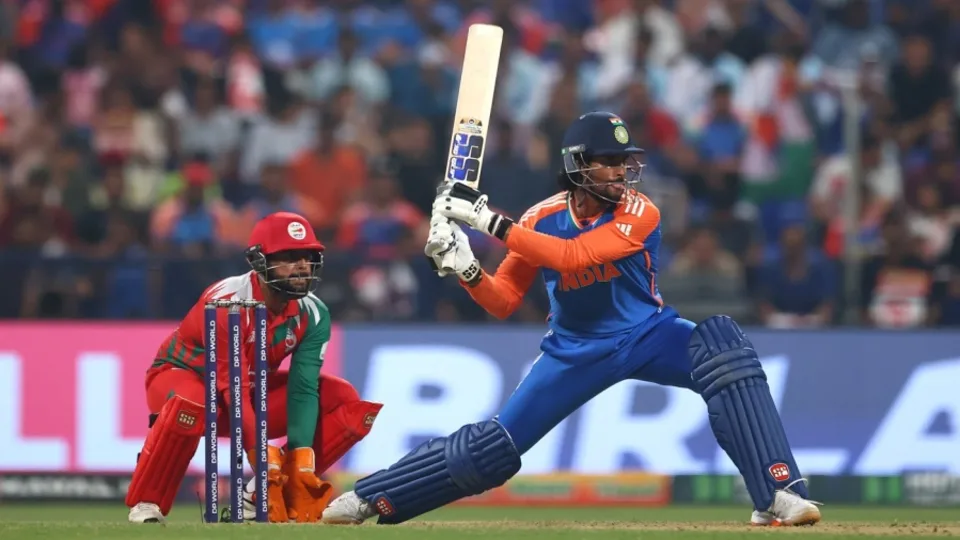
Unconvincing performance, but India check off most boxes in their victory against Oman as Super Fours loom.
Not all boxes ticked, but India get what they want from Oman contest despite an unconvincing performance.
In the dugout, fielding coach T Dilip was ecstatic as Hardik Pandya stopped himself a quarter of an inch before the advertising triangles at fine leg to finish a spectacular catch and retire Oman’s Aamir Kaleem.
Up until that point, Gautam Gambhir, who is normally stoic, had been busily gnawing his nails while sitting next to him. The equation went down from 48 off 18 balls to 40 off 16 when Harshit Rana’s first two balls of the 18th over were taken away for boundaries.
You thought India was going to lose this match even back then. However, the coaches’ uneasiness revealed the tension that had been building since their least experienced bowler was paired against a 43-year-old journeyman cricketer who was enjoying the limelight. Even though Oman ultimately lost by 21 points, India gained more from the match than just a “W” and two points.
India enjoyed the luxury of batting 20 overs for the first time in three games, on a slow field that was far larger than the one in Dubai, where they will spend the remainder of their Asia Cup campaign.
Suryakumar Yadav used up to eight bowling options, which stretched them out on the pitch. However, he wouldn’t have thought of having to make up for Axar Patel’s overs at any point, as Axar bowled just one over and was off the pitch for the final five-and-a-half overs after hitting his head on the ground while trying to make a catch.
Although none of them were able to light the stage on fire, India’s middle-order batsmen, who had been twitching their thumbs in the first two games after polishing off their chases of 58 and 128 in a combined 20.2 overs for a collective loss of four wickets, received a respectable beating.
Every batter received time in the middle, with the exception of Suryakumar, who waited until the overs were over before entering.
India’s locked-in opening duo of Abhishek Sharma and Shubman Gill was the one batting element they didn’t try. This is consistent with their tournament-long emphasis on the necessity of flexibility for the remaining batters, ranging from No. 3 to No. 8, but keeping the openers fixed.
However, India broke with their established left-right policy for the first time. Because Gill was out early, Sanju Samson was given a chance at No. 3. Samson batted long enough to score a half-century despite being scratchy at best.
Tilak Varma hit 29 off 18 balls, demonstrating his ability to adjust down in the order if necessary. Even though Shivam Dube and Hardik dropped out, Axar showed off his batting prowess against spin. The unluckiest of the two, Hardik was run out at the non-striker’s end after a deflection off the bowler’s hand.
Arshdeep then used the ball to bend the fresh ball and make it keep its line, but Harshit proved unpredictable. While Jasprit Bumrah and Varun Chakravarthy, two more wreckers-in-chief, ran drinks, Kuldeep was being his typical self and confusing batters.
In addition to improving their own reputation, Oman’s decision to push India to the very end added some excitement to a tournament that had been vacillating between controversy and a number of unfair matches.
Prior to Sunday’s second round matchup with Pakistan, it was the closest thing India had to a dress rehearsal before the Super Four; it was valuable in every manner but flawed in other areas.

